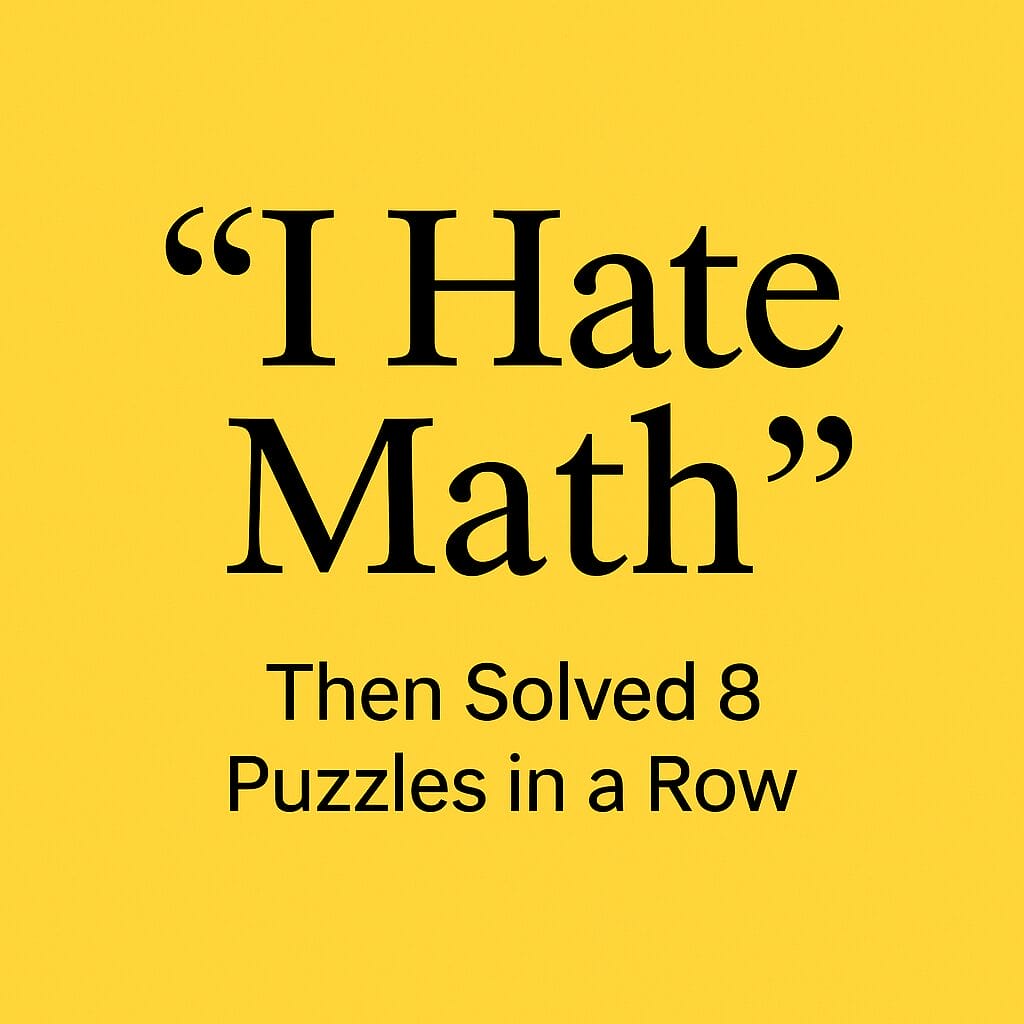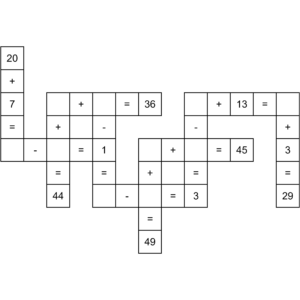She Said ‘I Hate Math’ — Then Solved 8 Puzzles in a Row
If you’ve ever taught math to a reluctant student — or tried to sell math-based printables that didn’t immediately get downloaded — you know this feeling:
“Ugh, math again? Do I have to?”
That one sigh tells you everything: you’re up against years of friction, boredom, or anxiety. Maybe all three.
But this isn’t a story about resistance. This is a story about a girl who went from “I hate math” to solving 8 logic-based puzzles in one sitting. No worksheets. No bribery. Just a puzzle format that changed how she felt about numbers.

The Problem: Math Isn’t Fun (For Most Kids)
Even with well-designed curriculum and engaging visuals, a lot of kids mentally check out the second they see:
- Rows of equations
- Timed drills
- Pages of samey subtraction problems
The issue isn’t ability. It’s framing.
Worksheets say: This is math. You must solve.
Puzzles say: This is a game. Can you crack it?
That shift alone changes everything.
Enter: The Puzzle That Doesn’t Feel Like Math Homework
That day, instead of the usual worksheet, she was given a criss cross math puzzle:
- Think crossword, but with equations
- Each cell held a number, an operator, or a solution
- Everything connected inside one shared grid
There were no instructions. Just a friendly challenge:
“Think you can finish it before the timer runs out?”
She didn’t groan. She grabbed a pencil.

What Happened Next
- She completed the first puzzle with help.
- The second, mostly on her own.
- By the third, she asked for another.
- She stopped at 8 puzzles because lunch was ready — not because she was tired.
The puzzles required:
- Math fluency
- Logical thinking
- Pattern tracking
But she wasn’t doing “math work.” She was solving a puzzle. A game. Something she chose to finish.
Why It Worked (and Keeps Working)

These puzzles:
- Offer instant feedback: you know when it fits or doesn’t
- Show visible progress: each cell filled is a mini reward
- Connect equations spatially, not linearly
So you’re not just moving left-to-right like a drill. You’re navigating a network of numbers. It’s active.
For reluctant learners, this matters. It puts control and curiosity back in their hands.
More Than Just Engagement
The shift wasn’t just emotional. It was academic:
- She practiced mental math without noticing
- She built stamina through repetition and variety
- She started using words like “easy,” “stuck,” and “wait!” (all signs of cognitive engagement)
And she left the table smiling.
That’s what a good puzzle can do.
You Can Try This Format Too
If you create:
- Classroom content
- Homeschool activities
- Printable math games
- Learning center resources
Or if you’re a parent trying to make practice less painful…
This puzzle format deserves a spot in your toolkit.
We’ve written more about what makes criss cross math puzzles unique here:
👉 Criss Cross Math Overview
Want to test it for yourself? 👉 Try the demo version
Related Reads
- Math Worksheets Are Boring. These Puzzles Aren’t.
- Why the Best Teachers Don’t ‘Teach’ Math — They Puzzle It Out
- Not a Designer? Not a Math Teacher? Not a Problem.
Puzzles don’t replace math instruction. But they can soften the entry point, reshape the experience, and re-engage learners who’ve already given up.
Sometimes all it takes is one puzzle.
